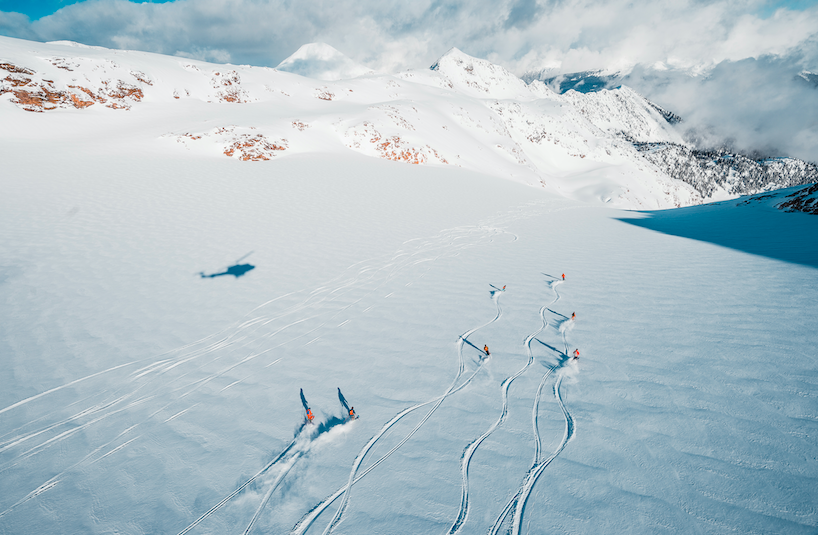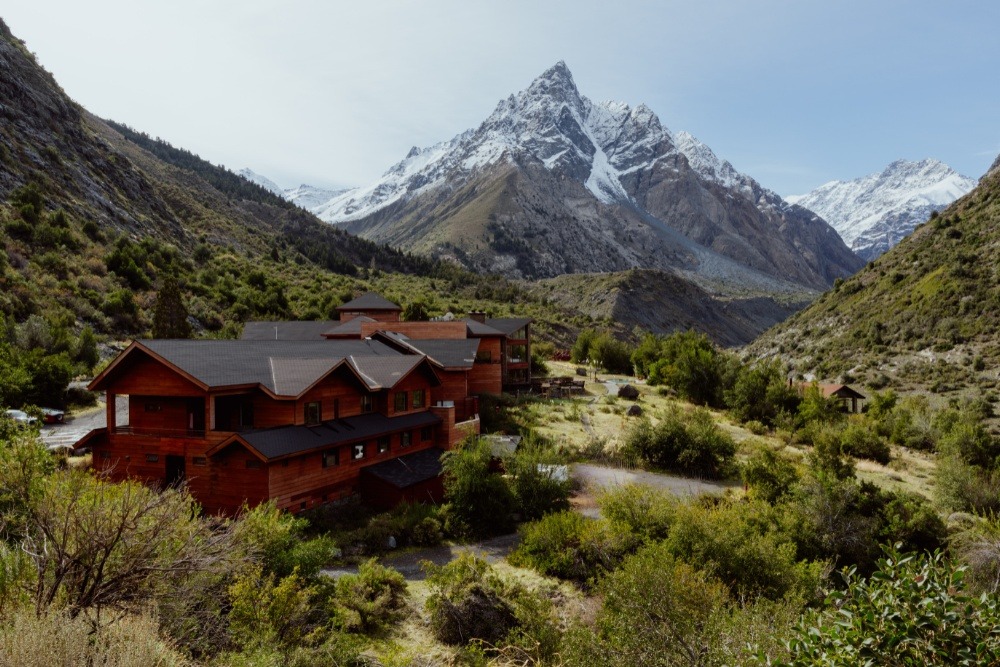What is the impact of our choice to go heliskiing? How bad is it? And what can we do to reduce that impact?
Full transparency here. We are a company that sells heli skiing trips. Though we are writing this article to help correct some of the narrative on the environmental impact of the sport, we are also hoping to be as unbiased as possible in doing so.
We are not going to pretend there is no environmental impact caused by the sport of heliskiing. Like all human activity, there is an impact. In this case, the most obvious is the carbon emissions from the use of jet fuel. But what is important here is to understand the scale of that impact. It is up to each of us to make choices and balance our activities to ensure we are being responsible for the future of our planet. But without all the information, from both sides, that task can be difficult.
It’s easy to instantly write off the heli ski industry as “bad for the environment” because of its fuel consumption, which contributes to greenhouse gas emissions. We see that happen all the time. Heliskiing in and of itself is also recreational and nonessential, making it even easier to vilify. So, when we decide to go heliskiing, we are 100% increasing our personal carbon footprint. That is not up for debate. But how significant is that impact? And is there anything I can do to reduce it?
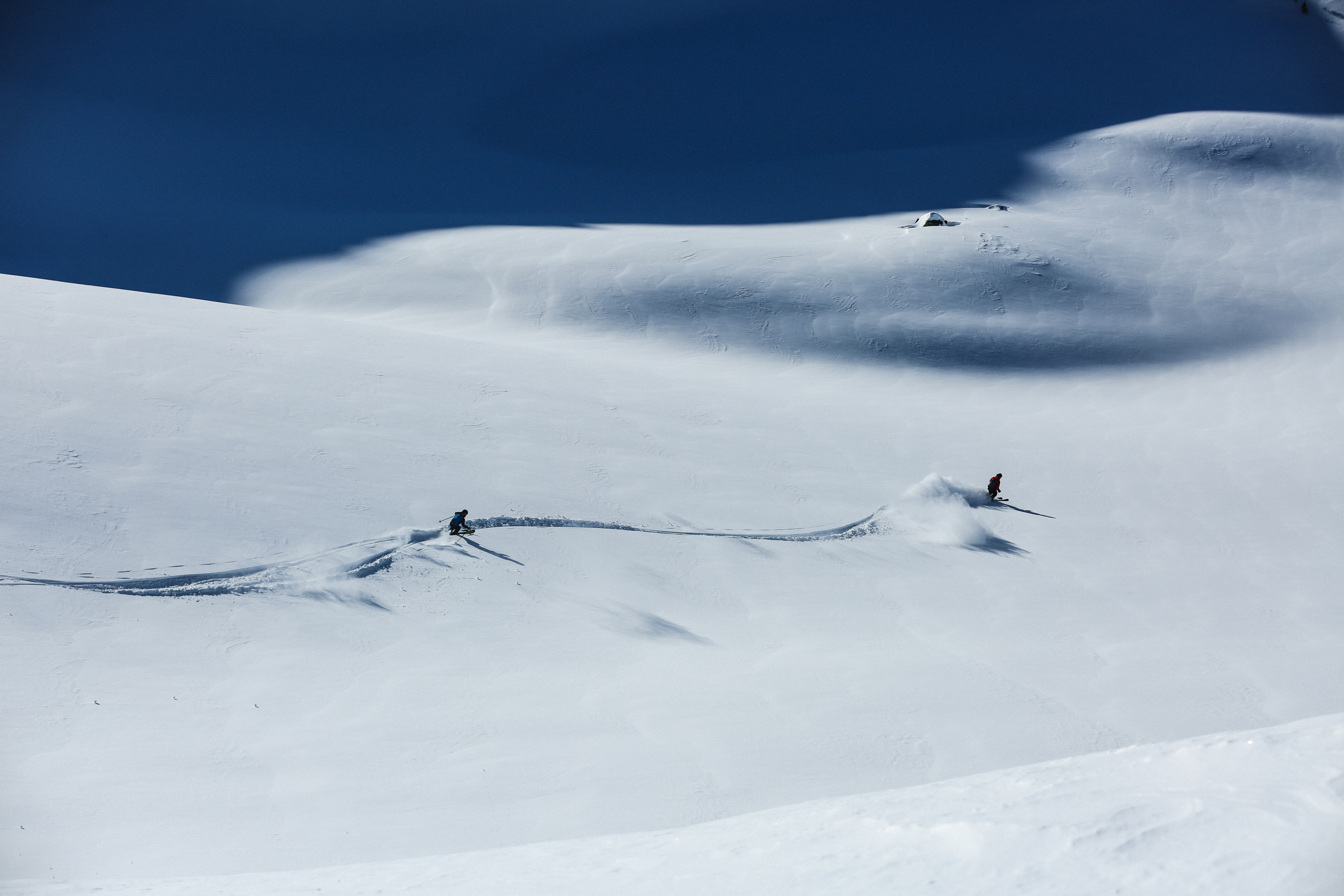
We created this (short) article in an attempt to show the scale of each individual’s impact when going heliskiing. We also wanted to provide some suggestions of ways to mitigate that impact or make choices in life to lower your personal carbon emissions. Combine that with a look at some of the ways heli ski operations are taking steps to mitigate their impact, and there is plenty to chew on. This is, in no way, meant to be a scientific study that delves into the positive and negative social and environmental impacts of the heli ski industry as a whole. Instead, we want to bring this down to the human level, and start a conversation.
To write this article, we sat down with one of the driving forces behind the BH Carbon Offset Program Team, Blackcomb Helicopters Sales and Marketing Manager Jordy Norris to help us learn about the GHG (greenhouse gas) emissions that result from Heliskiing. We chose Blackcomb Helicopters because they are currently fully offsetting emissions for their entire business. Each year they assess their impact and purchase matching carbon offsets through Offsetters, Canada’s leading carbon management company. Their offset projects are validated and verified by third parties to ensure that the emission reductions are real, additional and permanent. We look to them as experts on this topic. Much of our information and insights were garnered from conversations with their team and other reputable sources which are all linked.
We’ll go into more detail later on operator offsets, but you can learn more about their program here.
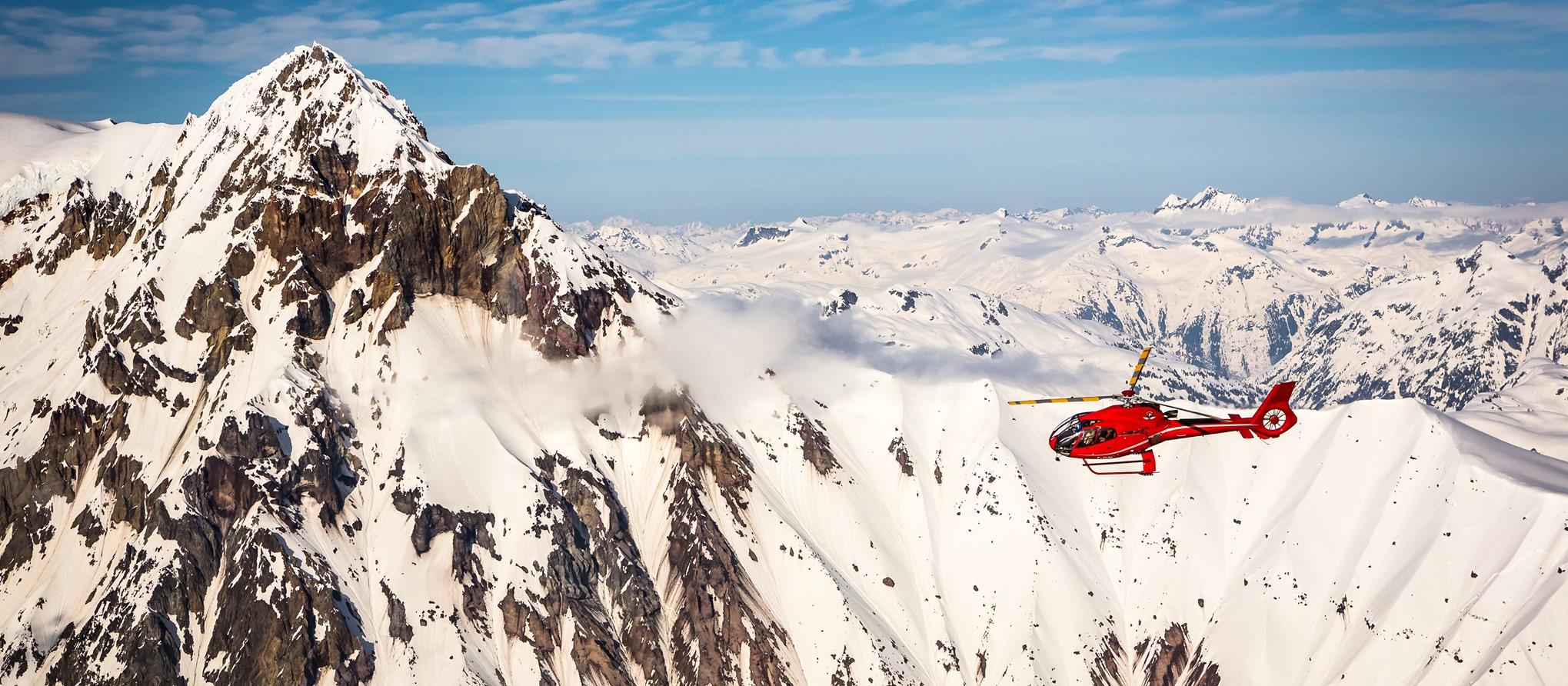
Some Numbers on the Emissions from Heliskiing
Our first step in this process was to calculate a pounds/metric ton of CO2 emissions per individual per day of heliskiing as a way to understand the impact of the activity. Though it’s not the only impact to consider, it is the most obvious.
To make this calculation, we looked at the B3 A-star with 4 guests. We used an estimate from one of our partners in Alaska to make the calculation, where guests have access to 5 hobbs hours per week (click here for information on Hobbs Hours).
Here is how we calculated the CO2 impact per guest per day:
- B3 A-star 4 guests = 5 hours per group in 1 week.
- 1.25 hours per guest per week.
- 0.22 hours per guest per day (assuming you ski the average of 5.5 days in your week).
- A B3 A-star consumes approximately 37.4 litres per hour per guest (45 Gal/hr (170 litre/hr) fuel consumption for a B3 A-star).
- That results in 374 lbs of CO2 per guest per day when you use the measurement of 10 lbs (0.005 tons) of CO2 per litre of burned fuel for heli-skiing operations. Whew!
Alright, now that is a lot, but the main takeaway here is that we are calculating an approximate measurement of 374 lbs of CO2 per guest per day of heliskiing or 0.169644 metric tons.
This is just an estimate to provide scale, and will vary greatly between operations. We did confirm this estimate using the rough numbers provided by the team at Blackcomb Helicopters, and it lined up pretty closely. We can use this as an approximate benchmark to now compare this to other activities that emit GHG to understand the scale.
If you have calculated this measurement differently or notice that we are missing something crucial, please email me directly (ethan@heli.life). I would be happy to update this article as we gain more insight and information.
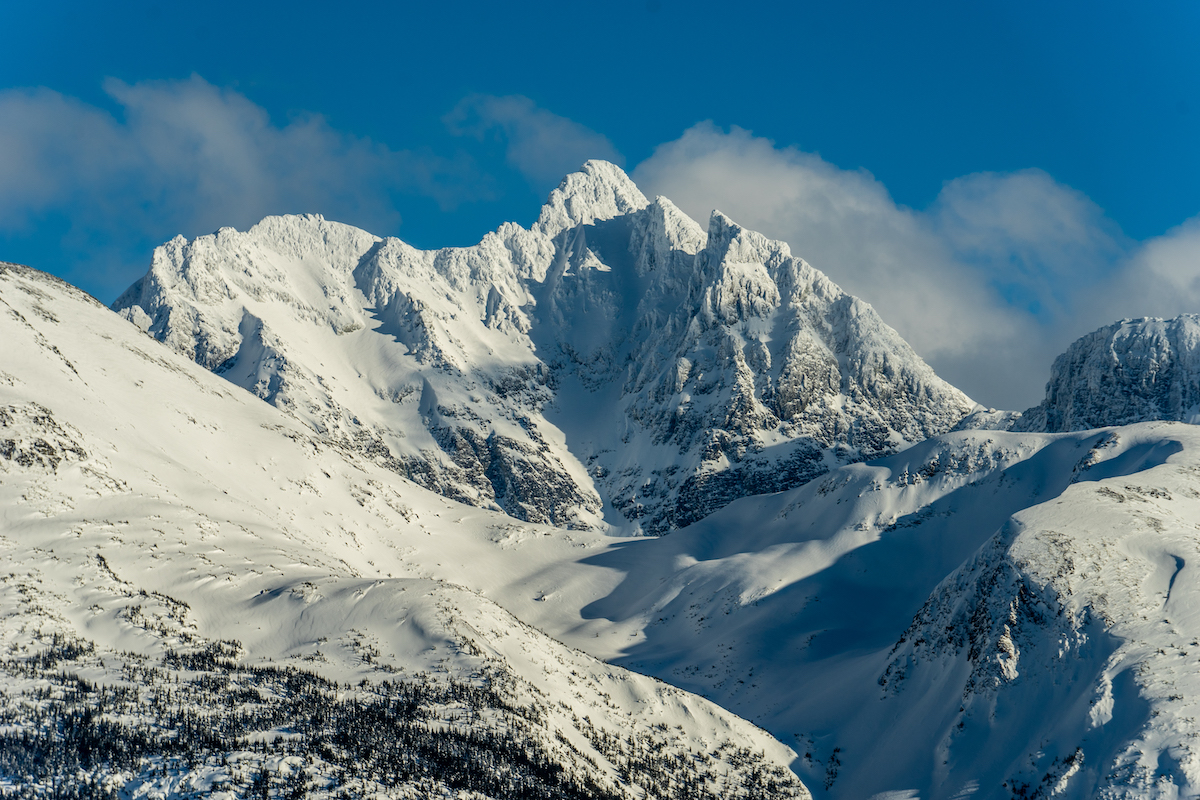
The Emissions from Flying vs. Heli Skiing
Most people are surprised to learn that the carbon impact of their flight to get to their vacation may be larger than the carbon impact of heliskiing itself. This can’t be true right?
Well, it all depends on how far you are traveling. According to ICAO.int carbon calculator, a round trip flight from Vancouver to NYC will result in 1,313.8 lbs of CO2 per passenger. This calculator looks specifically at emissions, and some calculators measure the impact even higher, which is noted below. If you were to travel to heli ski for 3 days, your emissions alone from your flight to get there from NYC might exceed the carbon impact of the activity itself (based on the ICAO calculator).
If you were to fly further, let’s say to a tropical destination in the other hemisphere, you could see an even higher lbs of CO2 per round trip flight. From NYC to Sao Paulo, Brazil would be 2275.6 lbs of CO2 emissions per passenger for a round trip. Traveling from NYC to Madrid, Spain is 1469.5 lbs of CO2 emissions per passenger. It all depends on the departure and arrival airport, but many international and even cross country round trip flights result in the equivalent of 3-4 days of heliskiing for an individual.
If you look at other calculators that include something called radiative forcing, which increases the carbon footprint of the flight due to account for the non CO2 emissions impact, then you get an even higher number for cross country flights. According to this calculator which includes radiative forcing, the carbon footprint of a flight is higher at 2400lbs for a round trip flight from Vancouver to NYC. Learn more about radiative forcing here.
If you were to go heliskiing, you could easily choose to skip 1 or 2 cross country flights that year, opting instead to stay local. This could easily offset your personal choice to go heliskiing that year. The math is that simple.
Comparing Heli Skiing to Other Activities
We also looked up some other “daily activities” to compare.
| Heliskiing for 1 day | 0.16 metric tons |
| Eating 8 ounces of steak every day for a year | 0.8 metric tons |
| Buying $100 of clothing each month for a year | 0.5 metric tons |
| Flying from California to Boston round trip* | 2.23 metric tons |
| Driving 30 miles round trip to work for a year | 4.3 metric tons |
| The average US household impact for a year | 49 metric tons |
https://www.livescience.com/13835-carbon-footprint-daily-activities.html
*This is the amount quoted in the article here in this table, but we have also calculated this amount being lower, at 0.6 metric tons if you do not include radiative forcing or 1.16 metric tons if you do.
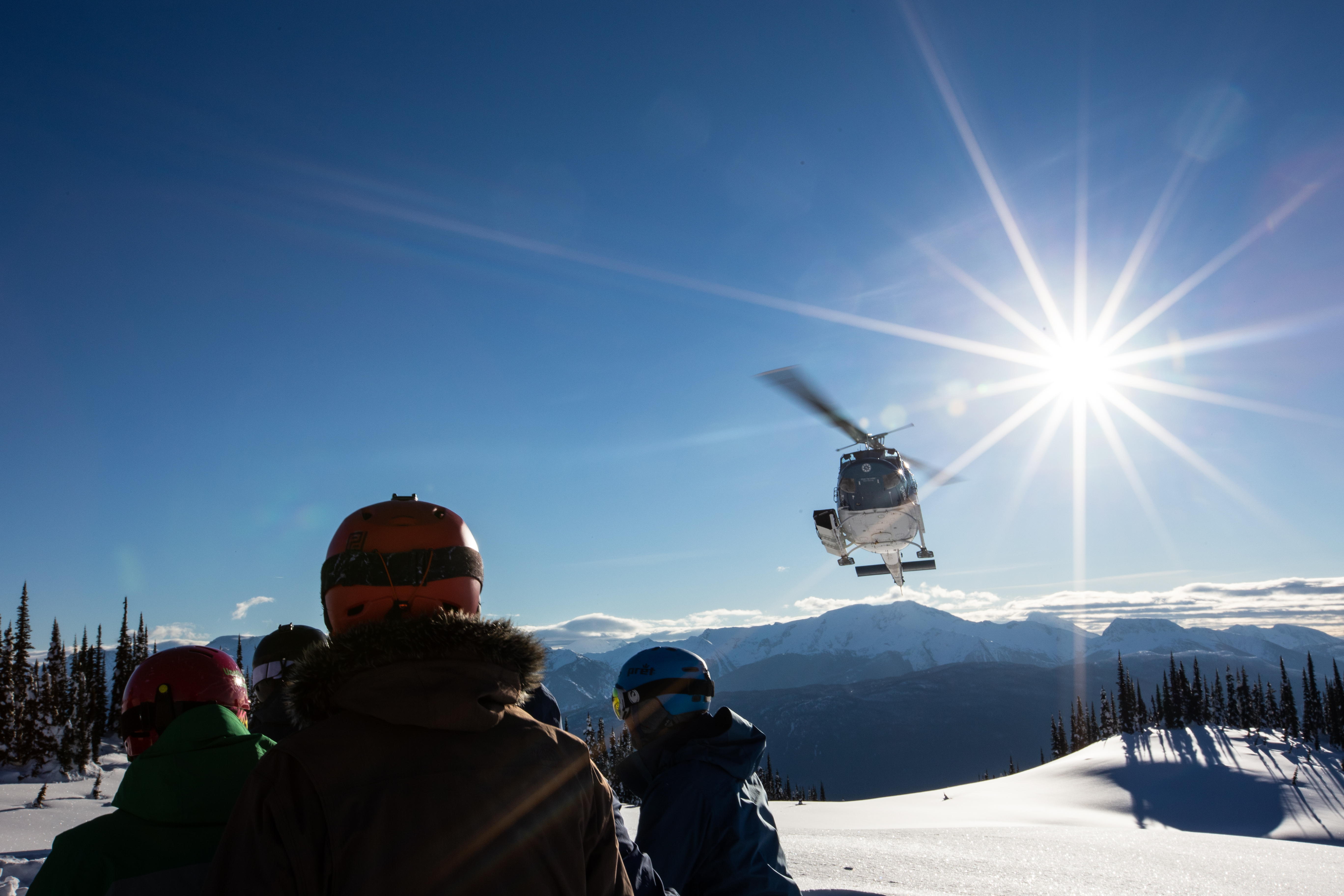
Other Considerations and the Environment
Operator Efforts Toward Sustainability
Most heli ski operators recognize that their sport contributes to greenhouse gas emissions and are actively taking steps to run more sustainable businesses wherever possible. Many lodges have chosen heating and power solutions that rely on micro hydro, solar, and wood boilers. Many purchase offsets, like Blackcomb Helicopters. In 2019, they purchased offsets that went toward the Quadra Island Project, a carbon sequestration project just off the coast of Vancouver Island.
“This project ensures that 418 hectares of forestland along the coastline-previously designated to be logged or converted to vacation homes-is now protected parkland.”
In this way, their efforts are serving double duty. Protected what would be an otherwise developed land and giving it economic value as an offset opportunity. They also purchase enough offsets to cover their entire business, not just the tourism part which accounts for about 25% of their operations. The other 75% is for wildfire, rescue and hydro/power projects, all which could be considered essential services for the region, which they choose to offset as well.
In British Columbia, Canada, members of the HeliCat organization (of which Heli is also a member) are making collective steps to address these issues. Members are collectively focusing on 8 areas: Energy Use & Climate Change, Social & Community, Wildlife, Fuel Storage & Handling, Economic, Waste Management, Fisheries & Watersheds, Vegetation Management, and Forestry & Trail Construction. You can learn more about their efforts to reduce impact here.

Wanna Offset Your Trip?
If you are interested in offsetting the carbon emissions for your heli ski trip, or even offsetting your flight to the destination regardless of the activity; email us. We can connect you with several organizations that are vetted by our partners and are reputable to provide that service. Send us an email at team@heli.life if you want to learn more about options for carbon offsets.

